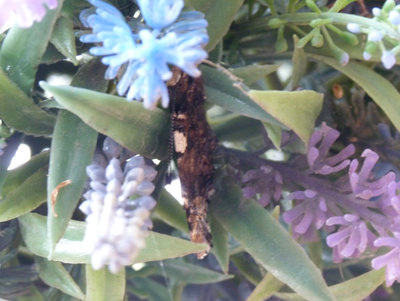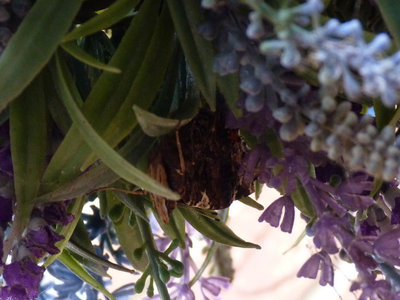Page 40 of 40
Re: jackz432r
Posted: Sat Jun 15, 2019 5:45 am
by David M
Nice finds, Paul. The lack of sun probably helped to becalm that beautiful, fresh Marbled White you saw.
No doubt the White Letter Hairstreaks will build in numbers rather quickly over the next week or so.
Re: jackz432r
Posted: Sat Nov 16, 2019 6:34 pm
by Paul Harfield
I can not believe it is 5 months since I last posted in my diary

. I have a bit of catching up to do which should keep me going through the winter months

 November 2019 - Deja vu in the garden
November 2019 - Deja vu in the garden
Some may remember during winter 2018 I found a couple of Red Admirals roosting for several months amongst the imitation plastic foliage of a hanging planter in my garden. That planter is still in exactly the same location, just outside my kitchen door. I again have Red Admirals in residence

.

- Last Sunday I noticed there was again a Red Admiral in residence.

- Today I noticed Red Admiral number 2 had arrived
Re: jackz432r
Posted: Sun Nov 17, 2019 6:27 pm
by Wurzel
After two years on the trot I think that you need to stop referring to it as an 'imitation planter' Paul and start calling it a Butterfly Hibernation Hotel


Have a goodun
Wurzel
Re: jackz432r
Posted: Thu Nov 21, 2019 8:15 am
by David M
I can not believe it is 5 months since I last posted in my diary. I have a bit of catching up to do which should keep me going through the winter months...
I shall look forward to any updates, Paul.
Given your contributions in the past, I am sure what you have to share will be of significant interest.
Re: jackz432r
Posted: Thu Nov 28, 2019 12:00 am
by Paul Harfield
Re: jackz432r
Posted: Fri Nov 29, 2019 10:54 pm
by Wurzel
Fascinating stuff Paul, one day I hope to have the time to go and have a look for these - I'll have to bookmark this page so that I now what to look for


Have a goodun
Wurzel
Re: jackz432r
Posted: Wed Dec 04, 2019 3:46 pm
by David M
Paul Harfield wrote:...The White-Letter Hairstreak typically lays its ova either at the base of a terminal Elm bud (photo 4) or on the girdle scar (photo 5) at the beginning of the current years growth..
Another excellent tutorial, Paul. I
did manage to find a few more elm trees in my vicinity so when I am passing by them I will take a look for ova using your advice as a guide. Many thanks.